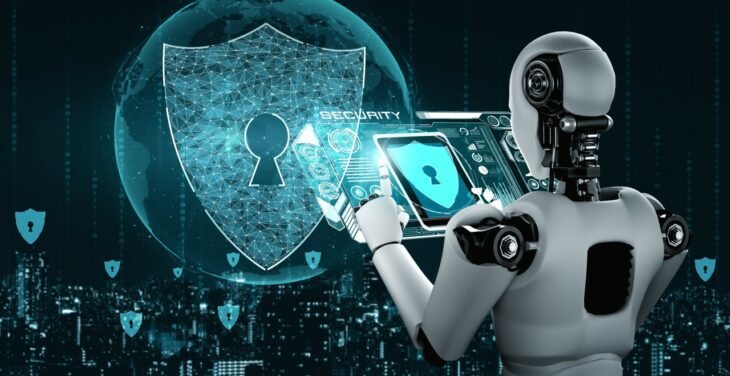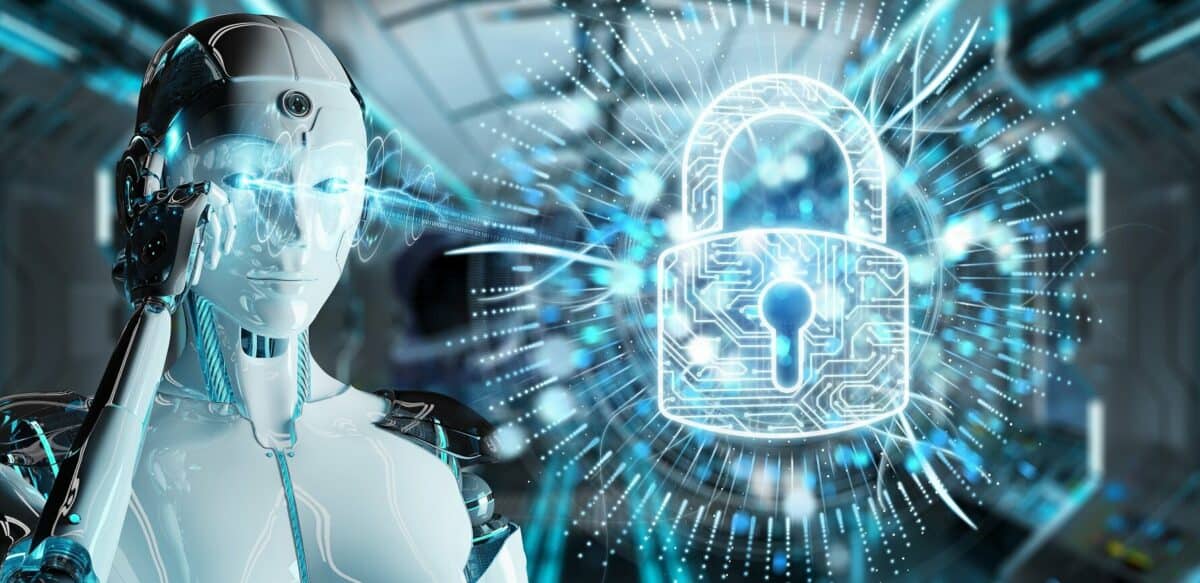
- 0 Comments
As businesses embrace the transformative power of Artificial Intelligence (AI) and Generation AI (GenAI) employees, they must also prioritize cybersecurity to protect these innovative technologies. In a hybrid work model, where remote and on-site work coexist, securing GenAI becomes even more critical. This article explores the unique cybersecurity challenges of GenAI in a hybrid work environment and offers strategies for businesses to mitigate risks and safeguard their AI-driven initiatives.
Understanding GenAI in a Hybrid Work Model
GenAI refers to individuals born in the digital age, characterized by their familiarity and comfort with technology, including AI-driven tools and platforms. As GenAI employees increasingly populate the workforce, businesses are leveraging AI to enhance productivity, automate processes, and gain competitive advantages.

In a hybrid work model, GenAI employees work both remotely and on-site, using AI-powered tools and platforms to collaborate, communicate, and perform their roles effectively. These tools may include AI-driven analytics platforms, chatbots, virtual assistants, and machine learning algorithms that enable data-driven decision-making and streamline workflows.
However, the widespread adoption of AI in a hybrid work environment introduces cybersecurity challenges that businesses must address to protect sensitive data, preserve privacy, and maintain the integrity of AI-driven systems.
Challenges of Securing GenAI in a Hybrid Work Model:
- Data Privacy and Protection: AI relies on vast amounts of data to train algorithms and generate insights. In a hybrid work model, where employees access and share data from various locations and devices, ensuring data privacy and protection becomes complex. Businesses must implement robust data encryption, access controls, and data loss prevention measures to safeguard sensitive information from unauthorized access or disclosure.
- Endpoint Security: With GenAI employees using diverse devices and networks to access AI-powered tools and platforms, endpoint security becomes a significant concern. Endpoints serve as entry points for cyber threats, including malware, ransomware, and phishing attacks. Implementing endpoint protection solutions, such as antivirus software, firewalls, and endpoint detection and response (EDR) tools, is essential to detect and mitigate security threats at the device level.
- Insider Threats: While GenAI employees bring valuable skills and technological expertise to the workforce, they also pose insider threat risks. Insider threats may arise from unintentional actions, such as accidental data breaches or misconfigured AI algorithms, as well as malicious activities, such as insider attacks or data theft. Businesses must implement user behavior analytics, privilege management, and employee training programs to detect and mitigate insider threats effectively.
- Cloud Security: Many AI-powered tools and platforms are cloud-based, requiring businesses to rely on cloud services for data storage, processing, and hosting. However, the cloud introduces security risks, including data breaches, misconfigurations, and unauthorized access. Businesses must adopt a comprehensive cloud security strategy that includes encryption, access controls, network segmentation, and regular security assessments to protect AI-driven systems and data in the cloud.
- Supply Chain Risks: GenAI employees often collaborate with third-party vendors, partners, and suppliers, increasing the risk of supply chain attacks. Cybercriminals may target supply chain partners to gain unauthorized access to AI-driven systems or inject malicious code into AI algorithms. Businesses must vet and monitor third-party vendors, implement supply chain security controls, and establish incident response protocols to mitigate supply chain risks effectively.
Strategies for Securing GenAI in a Hybrid Work Model:
- Implement Zero Trust Architecture: Adopt a zero trust security model that verifies and validates every user, device, and network connection, regardless of their location or trust level. Implementing zero trust principles, such as least privilege access, microsegmentation, and continuous authentication, helps businesses prevent unauthorized access and reduce the impact of security breaches.
- Conduct Regular Security Audits: Perform regular security audits and assessments of AI-driven systems, applications, and infrastructure to identify vulnerabilities, misconfigurations, and compliance gaps. Addressing security issues proactively helps businesses strengthen their cybersecurity posture and minimize the risk of cyber attacks or data breaches.
- Provide Ongoing Training and Awareness: Offer cybersecurity training and awareness programs to GenAI employees, educating them about common security threats, best practices, and their roles and responsibilities in maintaining cybersecurity. Empowering employees to recognize and report security incidents helps businesses mitigate risks and enhance their overall security culture.
- Leverage AI for Security: Harness the power of AI-driven security solutions, such as AI-powered threat detection, anomaly detection, and predictive analytics, to identify and respond to security threats in real-time. AI enables businesses to analyze vast amounts of data, detect patterns, and automate security processes, enhancing threat detection and response capabilities.
- Foster Collaboration and Communication: Promote collaboration and communication among GenAI employees, security teams, and other stakeholders to share cybersecurity insights, best practices, and lessons learned. Creating a culture of collaboration and communication helps businesses align security objectives with business goals and adapt to evolving cybersecurity challenges effectively.
Securing GenAI in a hybrid work model presents unique cybersecurity challenges for businesses, requiring a proactive and comprehensive approach to mitigate risks effectively. By understanding the challenges of securing GenAI, implementing robust security measures, and fostering a culture of cybersecurity awareness and collaboration, businesses can safeguard their AI-driven initiatives and enable GenAI employees to thrive in a secure work environment.